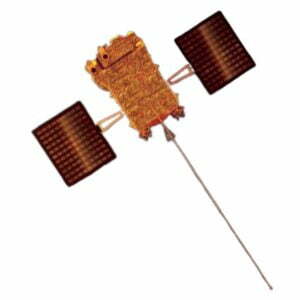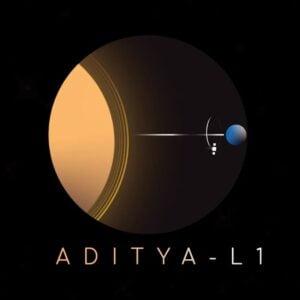Aditya L-1
|
| |
| Mission Type | Solar Observation |
| Operator | ISRO |
| COSPAR ID | 2023-132A |
| SATCAT no. | 57754 |
| Website | www.isro.gov.in/Aditya_L1 .html |
| Mission duration | 5.2 years (planned) 26 days (elapsed) |
| Spacecraft properties | |
| Spacecraft | PSLV-XL/C-57 |
| Spacecraft type | PSLV |
| Bus | l-1k |
| Manufacturer | ISRO/IUCAA/IIA |
| Launch mass | 1,475 kg (3,252 lb) |
| Payload mass | 244 kg (538 lb) |
| Start of mission | |
| Launch date | 2 September 2023, 11:50 IST (06:20 UTC) |
| Rocket | PSLV-XL |
| Launch site | Satish Dhawan Space Centre |
| Contractor | ISRO |
| Orbital parameters | |
| Reference system | Sun-Earth L1 Orbital |
| Regime | Halo orbit |
| Period | 177.86 days |
| Epoch | January 2024 (planned) |
| |
The Indian Space Scientific Organization (ISRO) and a number of other Indian scientific organizations created the coronagraphy satellite Aditya-L1 to investigate the solar atmosphere. It will research the solar atmosphere, solar magnetic storms, and their effects on the environment around Earth from a halo orbit about the L1 Lagrange point between the Earth and the Sun, approximately 1.5 million kilometers from Earth.
This is the first solar observatory expedition from India. The project’s director is Nigar Shaji. On September 2, 2023, at 11:50 IST, 10 days after the successful landing of ISRO’s Moon mission Chandrayaan-3, Aditya-L1 was launched atop the PSLV C57. Nearly an hour later, at 12:57 IST, it successfully detached from its fourth stage after having entered its desired orbit. About 127 days after liftoff, it should enter its target orbit point at L1.
Science objectives
Aditya L1’s primary goals are to:
- Observe the dynamical processes occurring in the sun’s chromosphere and corona;
- We want to learn more about the genesis of CMEs, the nature of the coronal magnetic field, how heat is transferred during flares, and the physics of partly ionized plasma, among other things.
- To keep an eye on the surrounding particle environment physically.
- Trace the chain of events that takes place in the solar interior prior to eruptions.
- To learn more about space weather and the solar wind’s history, make-up, and behavior.
HISTORY
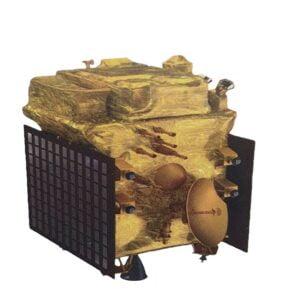
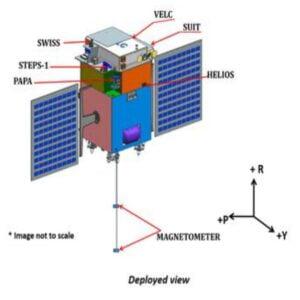
The idea for Aditya originated in January 2008 within the ADCOS (Advisory Committee for Space Sciences). The original concept was for a tiny satellite weighing around 400 kg (880 lb) to research the solar corona from a low-earth orbit (800 km). For the 2016–2017 fiscal year, a total of 3 crore was set aside for experimental purposes. Aditya-L1 is the new name for the project, which has grown to include a full solar and space environment observatory that will be stationed at Lagrange Point L1. As of this writing in July 2019, the budgeted cost of the mission is 378 crores (not including launch expenditures).
Naming
Surya and the Adityas are the Hindu deities associated with the sun, and hence the word “Aditya” is derived from them. Lagrange point 1 between the Sun and Earth is where the spacecraft will eventually land, hence the “L1” moniker.
Overview

After liftoff, the Aditya-L1 mission will travel about 1,500,000 km (930,000 mi) to its destination in the halo orbit around the L1 point. This will take around 109 Earth days. Stationkeeping at a speed of 0.2-4 m/s per year is expected to retain the spacecraft in its halo orbit for the remainder of the mission. The 1,500 kg (3,300 lb) satellite carries seven science payloads with different goals. These include instruments to measure coronal heating, solar wind acceleration, coronal magnetometry, the origin and monitoring of near-UV solar radiation (which drives Earth’s upper atmospheric dynamics and global climate), the coupling of the solar photosphere to the chromosphere and corona, and energetic particle fluence in Earth’s space environment.
Aditya-L1’s mission is to study the photosphere, chromosphere, and corona of the sun. Because of the interference from Earth’s magnetic field, the original plan for the Aditya mission could not have been successful if it had been launched into a low Earth orbit.
Coronal heating is one of the biggest mysteries in solar physics. In contrast to the top solar atmosphere’s temperature of 1,000,000 K (1,000,000 °C; 1,800,000 °F), the lower solar atmosphere is just 5,730 K (10,340 °F) hot. Furthermore, the precise mechanisms by which solar radiation influences the temporal and spatial dynamics of Earth’s atmosphere remain unclear. The mission will gather near-simultaneous photographs of the sun’s atmospheric layers, shedding light on the pathways and mechanisms by which energy is transmitted from one layer to another. As a result, the Aditya-L1 mission will allow for a complete comprehension of solar dynamical processes and the resolution of some of the open issues in solar physics and heliophysics.
Payloads
Aditya-L1’s equipment is specifically calibrated to study the chromosphere and corona of the sun. At L1, in-situ instruments will have a look around to see what’s going on. There are a total of seven instruments on board, with four dedicated to solar remote sensing and the other three to on-the-ground research. The payloads were created by a number of Indian research institutions working closely with ISRO facilities.
| Type | Sl. No | Payload | Capability | Laboratories |
| Remote Sensing Payloads | 1 | Visible Emission Line Coronagraph (VELC) | Corona imaging and spectroscopy | Indian Institute of Astrophysics, Bangalore |
| 2 | Solar Ultraviolet Imaging Telescope (SUIT) | Photosphere and chromosphere imaging-narrow and broadband | Inter University Centre for Astronomy & Astrophysics, Pune | |
| 3 | Solar Low Energy X-ray Spectrometer (SoLEXS) | Soft X-ray spectrometer: Sun-as-a-star observation | U R Rao Satellite Centre, bangalore | |
| 4 | High Energy L1 Orbiting X-ray Spectrometer (HEL1OS) | Hard X-ray spectrometer: Sun-as-a-star observation | ||
| In-situ Payloads | 5 | Aditya Solar wind Particle Experiment (ASPEX) | Solar wind and particle analyzer: Protons and heavier ions with directions | Physical Research Laboratory, Ahmedabad |
| 6 | Plasma Analyser Package For Aditya (PAPA) | Solar wind and particle Analyzer: Electrons and Heavier lons with directons | Space Physics Laboratory, Vikram Sarabhai Space Centre, Thiruvananthapuram | |
| 7 | Advanced Tri-axial High Resolution Disital Magnetometers | In-situ magnetic field (Bx, By and Bz). | Laboratory for Electro Optics Systems, Bangalore |
Aditya-L1’s equipment is specifically calibrated to study the chromosphere and corona of the sun. At L1, in-situ instruments will monitor conditions in the immediate area. Four of the seven payloads are designed for solar remote sensing, while the remaining three are for on-the-ground observations. The payloads were created by a number of Indian research institutions working closely with ISRO facilities.
Mission Profile
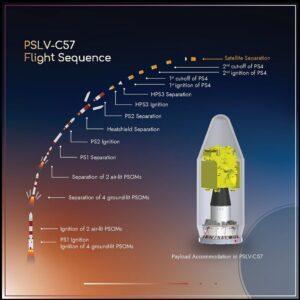
Launch
The Aditya-L1 was successfully launched from the Second Launch Pad of the Satish Dhawan Space Centre (SDSC) in Sriharikota at 11:50 IST on September 2, 2023.
After 63 minutes and 20 seconds of flight, at 12:54 IST, Aditya-L1 was successfully injected into an elliptical orbit around the Earth.
Before being injected into a transfer orbit towards the L1 Lagrange point, Aditya-L1 will perform four orbital maneuvers close to Earth. It will take about 127 days to reach its target orbit at the L1 point following liftoff.
Orbit raising burns
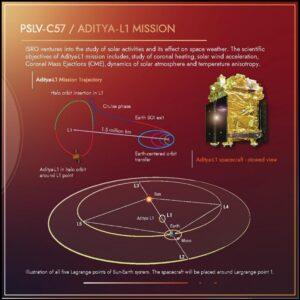
First orbit raising burn
Its first Earth-bound maneuver, which increased the Aditya-L1’s orbit by 22,459 kilometers (13,955 miles), took place on September 3, 2023.
Second orbit raising burn
Aditya-L1 completed its second Earth-bound maneuver on September 5, 2023, increasing its orbit from 40,225 km (24,995 km) to 282 km (175 mi).
Third orbit raising burn
Aditya-L1 completed its third Earth-bound maneuver on September 10, 2023, increasing its orbit from 296 km (184 mi) to 71,767 km (44,594 mi).
Fourth orbit raising burn
On September 15, 2023, Aditya-L1 completed its fourth Earth-bound maneuver, increasing its initial orbit from 256 kilometers (159 miles) to 121,973 kilometers (75,791 miles). This is the final maneuver of its kind before the Trans-Lagrangian 1 injection on September 19.
Injection into the Trans-Lagrangian 1
Aditya-L1 completed its final escape maneuver from Earth’s orbit on September 19, 2023, and began its journey to the Lagrange 1 point. It will take at least 4 months to travel the remaining 1.5 million kilometers to its final destination.
Mission stage and maneuvers
| Stage and Sequence | Date/Time | Time (IST) | Periapsis | Apoapsis | Orbital Period |
| Launch | |||||
| Earth Orbit Insertion | 2 September 2023 | 12:54 p.m. | 235 km (146 mi) | 19,500km (12, 100 mi) | 22 hours, 46 minutes |
| Earth Bound Maneuvers | |||||
| Earth Bound Maneuver 1 | 3 September 2023 | 11:40 a.m. | 245 km 152 mi) | 22,459 km (13,955 mi) | 39 hours, 20 minutes |
| Earth Bound Maneuver 2 | 5 September 2023 | 3:00 a.m. | 282 km (175 mi) | 40,225 km (24,995 mi) | 4 days, 23 hours 30 minutes |
| Earth Bound Maneuver 3 | 10 September 2023 | 2:30 a.m. | 296 km (184 mi) | 71,767 km (44,594 mi) | 4 days, 23 hours and 45 minutes |
| Earth Bound Maneuver 4 | 15 September 2023 | 2:15 a.m. | 256 km (159 mi) | 121,973 km (75,791 mi) | 3 days, 23 hours and 45 minutes |
| Trans-Lagrangian Point 1 Injection | 19 September 2023 | 2:00 a.m. | |||
| Halo orbit injection | |||||
| Halo orbit insertion | January 2024 | ||||
Team
•Nigar Shaji – Project director
•Sankarasubramanian K – Principal scientist of the mission.
Related Post :
